From a huge number of species and varieties of Clematis is very popular among the gardeners, Clematis Piil uses. It is compact and attractive, his buds have a bright, expressive look, look great in small gardens, near the terraces, arbors and balconies.
Description of grade Clematis Piil
Clematis Piil is a relatively low grade of Clematis, the height of which reaches a maximum of 1.5 m. Among other species of this cult, there are those that grow up to 3 m in height. The plant requires trimming, but inappropriate.
The decorative properties of Clematis give its buds. Flowers at variety are large, 10-12 cm in diameter, they are abundantly covered with a bush. One instance can with up to 600 buds. They are painted into the pink-lilacium gamut. The feature of Clematis variety Piil is that in the first year of flowering the bush is covered with simple flowers, and in the next seasons, terry lush buds are already decorated.
The flowering of large-flowered Clematis Piil lasts from June to September, that is, almost all summer. Plants that live for no first year can bloom a little earlier than young copies, approximately in May. Culture not only looks beautiful, but also smells pleasantly. She has bright green foliage. Clematis bushes are able to propagate any support, clinging to sheal stuffing, so they are often used to decorate fences and creating alive hedges.
Landing Clematis Piil.
An unusually beautiful plant Clematis requires compliance with some subtleties in landing:
- It is capricious in the choice of soil. The best culture is suitable for nutritious loams or letters. The land must be lightweight, porous, loose and well-fertilized, for example, humus. Loves Clematis weakly alkaline or neutral soil.
- Culture requires light and heat, it is not recommended to plant it in the shade. It is desirable to choose a plot open, sunny, without drafts, in the extreme case zones with a small shadency are suitable. With a shortage of ultraviolet Clematis blooms very badly.
- When landing Clematis Pyal, the soil is desirable to prepare in advance. Here is an approximate recipe: Mix garden ground with sand and compost, add peat and a little mineral fertilizer. Fertilizers can be replaced by bone flour. In the landing jam, it is necessary to equip the drainage of bricks or rubble. The thickness of the drainage layer is 10-15 cm. At the site of the landing, do not forget to immediately put the supports for which shoots will be mounted.
- In the open soil Clematis Piil Saluat in the spring or autumn. Saplings are swing enough deep enough, and the older the plant, the greater should be the depth. If a bush is 1-2 years old, dig a hole for it at 10-12 cm for older copies, for older copies it is necessary to make a recess at 18-20 cm. Such depth is due to the fact that the plant is easier to move freezing.
The reproduction of Clematis Piil.
Seed way to plant Clematis Piil
Clematis Breeding Piil Seeds can be represented as a small instruction:
- To harde seeds before landing, it is desirable to hold them in the cold, namely putting an hour and a half in the freezer chamber.
- The grains are then getting and kept at room temperature for another 2 hours. Such manipulations are carried out even twice, but no more.
- After hardening, the seeds are put into a solution of growth stimulator also for a couple of hours. Then they get, washed with clean water and folded for graze.
- The grains are folded in a comfortable container and are covered with polyethylene, after which they hide into a dark room. Every 2-3 days, polyethylene is removed to the side and give seeds of air access. In this mode, sprouts are waiting for the appearance.
- As soon as the grains are good, it comes to transfer them to the flower.
Clematis reproduction to Piil's division bush
According to the numerous reviews of the gardeners, Clematis Piil is better, easier and more convenient to disassemble the division of the bush. To do this, a large and healthy bush is digging out of the ground and divide the knife into several parts. Then the fragments are cleared into the soil. This method allows to preserve all species signs, besides, the transplanted clematis is blooming much faster than in the case of seed reproduction.
It is important to choose a healthy plant, since all diseases from the maternal bush can be transmitted to child instances. Sometimes Clematis can adapt badly on the new flowerbed.
Clematis Transplanting Pyal Strenniki
The hauling is also considered an easy way to reproduce culture, it is carried out like this:
- Clematis is cut with cuttings with cobatis - small shoots.
- For landing prepare a fertile earth substrate. The cuttings are cut at an angle of 45 ° and bought into the soil.
- The land is carefully moistened and transferred to a warm room. For the speed of growth of the roots, you can hold the cuttings for several hours in the corneum solution.
- Every 2 days the shoots are irrigated with water. When they get hurt and form roots, they can be transferred to the site.
Clematis Care Piil
Curply care includes such activities:
- The plant needs to be regularly and abundantly. With not very hot weather, it will be enough to moisturize bushes once a week, and in the arid periods it is better to do it 2-3 times more often. Water during watering Clematis no need to regret, especially in the heat.
- Clematis can grow at the same place for many years, but the plants of the seven-year-old age and older cease to give such large and beautiful buds as before. This is because the root system greatly creates and does not receive the desired amount of moisture. It is easy to solve the problem, we just need to dull a hole next to Clematis, put a bucket in it with holes at the bottom, and then fill it with water.
- Curply care implies its periodic fertilizer. Young annual copies of feeding are not needed, but more adult bushes are better equipped with nutrients. The feeders are made throughout the growing season, they do it after irrigated. Clematisam need mineral and organic compositions. A good fertilizer is the chalk solution and a copper solution.
- Clematis Care Piil includes weeds, the prevention of diseases, the fight against pests, mulching and cropping.
Clematis Pruning Rules Piil
Clematis Piil refers to varieties requiring a second type of trimming. This type belongs to the types of culture, in which new buds bloom on both old and young branches. Clematis Pruning Piil is carried out in 2 stages:
- The first stage implies the removal of a part of the Lian with faded flowers. Do it in the summer. If the escape is too lush, it is completely cut off.
- The second stage of trimming is carried out in late autumn to frosts. At this time remove fresh shoots.
The pruning degree depends on how thick and lush bush, as well as the desire to get earlier flowering. For those who want, Clematis covered with buds before the deadline, you need to trim only the blooming fragments of Lian. But to regulate the thickening of the plant and the number of shoots can be moderate or deep trimming. With this method, the culture will bloom uniformly. The deep degree of trimming implies cutting the entire branch, moderate is the removal of Liana to the first leaflet.
Preparation of Clematis Pyal for Winter
Clematis are winter at the flowerbed, but to protect them better and cover them to protect them. Variety pied, like all the plants of the second group of trimming, cut at 1 m from large kidneys. The kidneys, however, may not appear if the weather was standing in the summer. In this case, the lianas are cut completely to the soil itself or leave about 20-30 cm on top. After trimming, Clematis must be hidden. This can be done like this:
- From the remaining shoots, remove the leaves. Through the branches go to the ground, pre-lay on them a spruce husk.
- Plush the plant from above with leaves, and install bricks on the sides of the bush.
- Bricks cover the boards and wrap the whole design with polyethylene.
Clematis is well tolerating wintering, if during this period is not exposed to moisture. So as not to destroy the plant, it is necessary to cover it dry, otherwise ice is formed on the branches, and the culture will freeze. Note that it is too impossible to strengthen the Clematis Piil too much, otherwise it is forbidden under the film and can start it.
For the same reason, the shelter is important to remove with the onset of spring heat. Hold the plant under the layer of sawdust gardeners are not recommended. The chips absorbs moisture and mortgals, and in the spring it hipst. Remove such a shelter with colors will not work on time, and they may have time to recry.
Clematis Piil, photo:

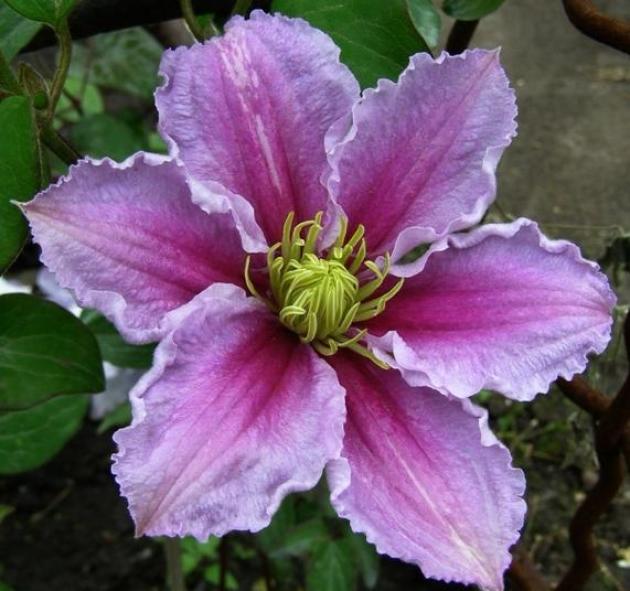
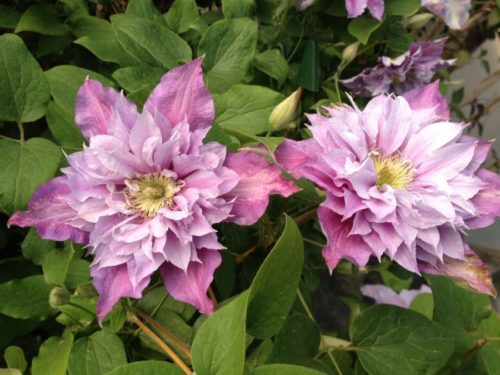
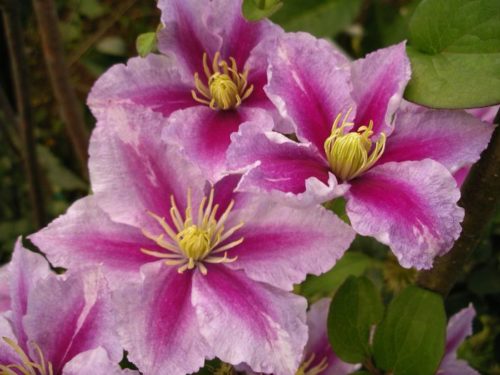


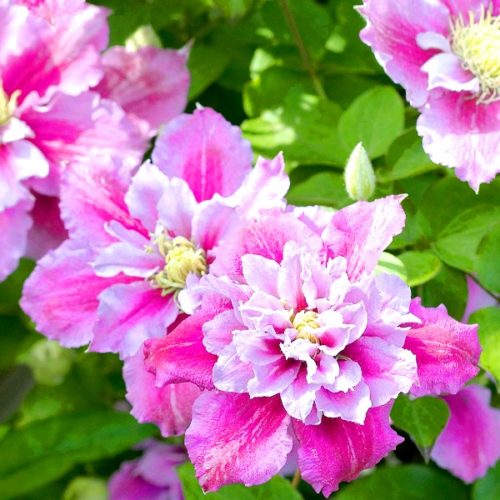
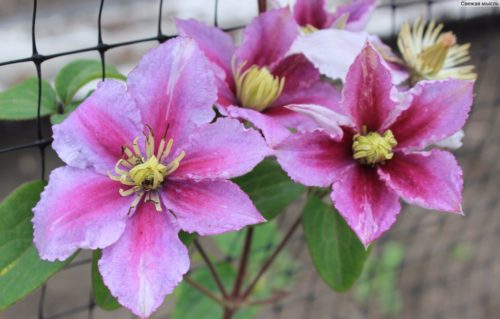
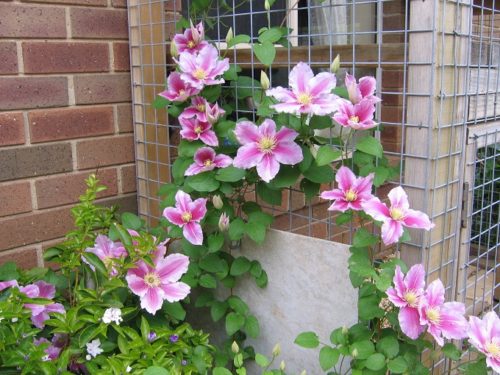
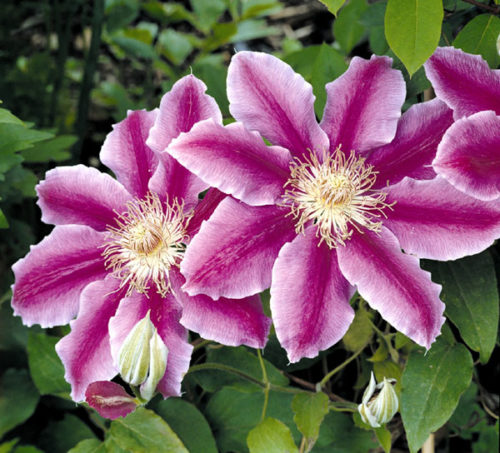
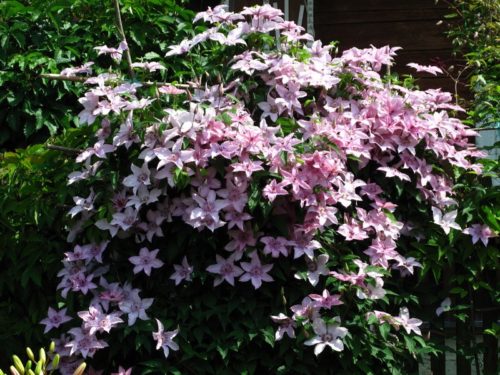
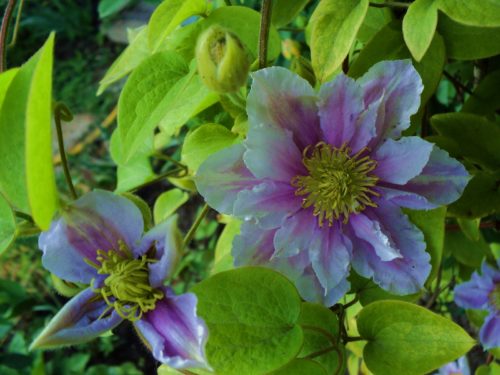
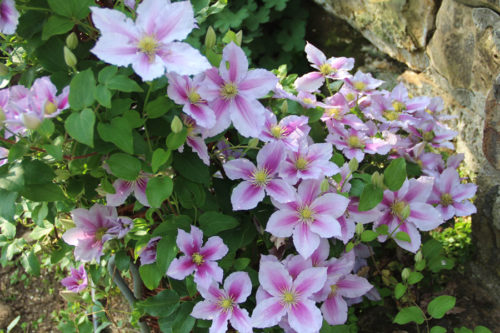
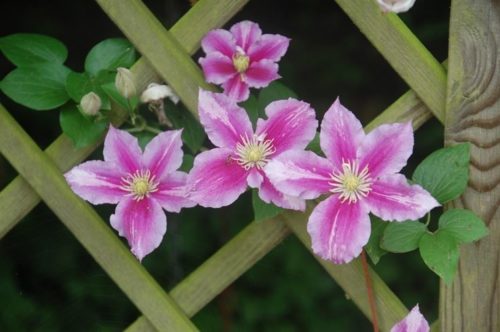












 Start a discussion ...
Start a discussion ...